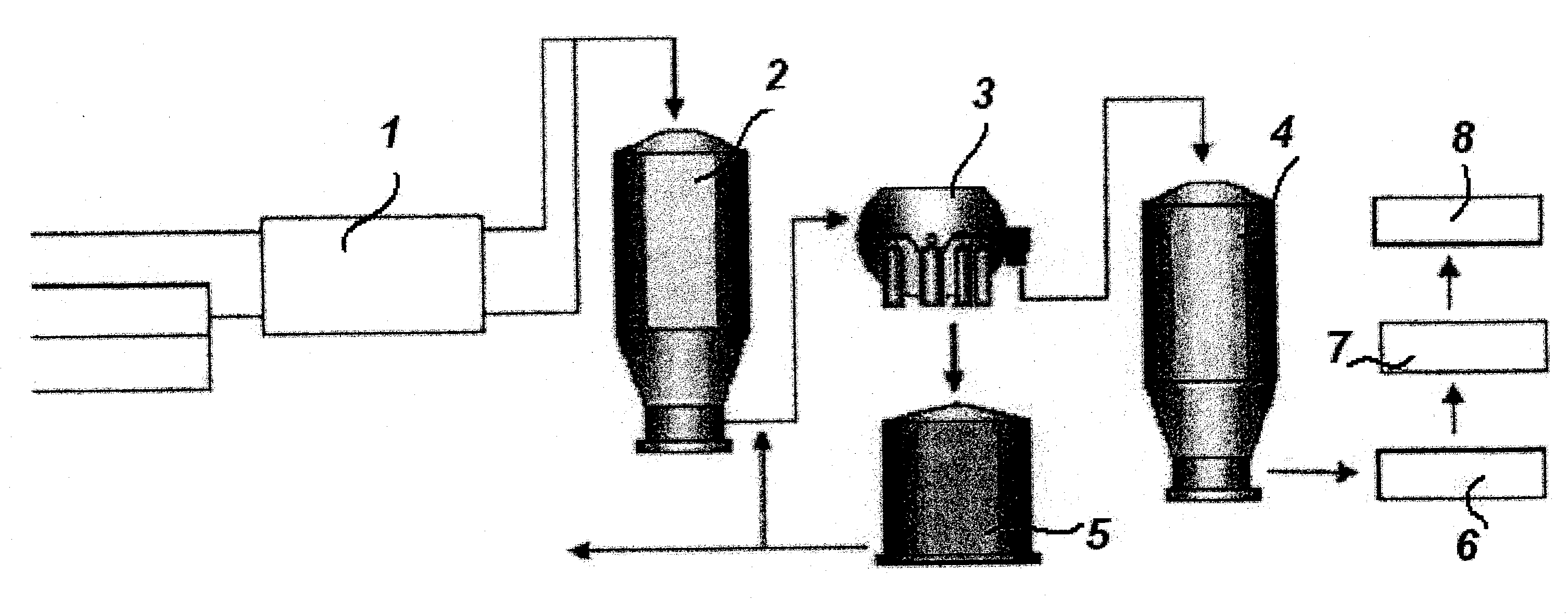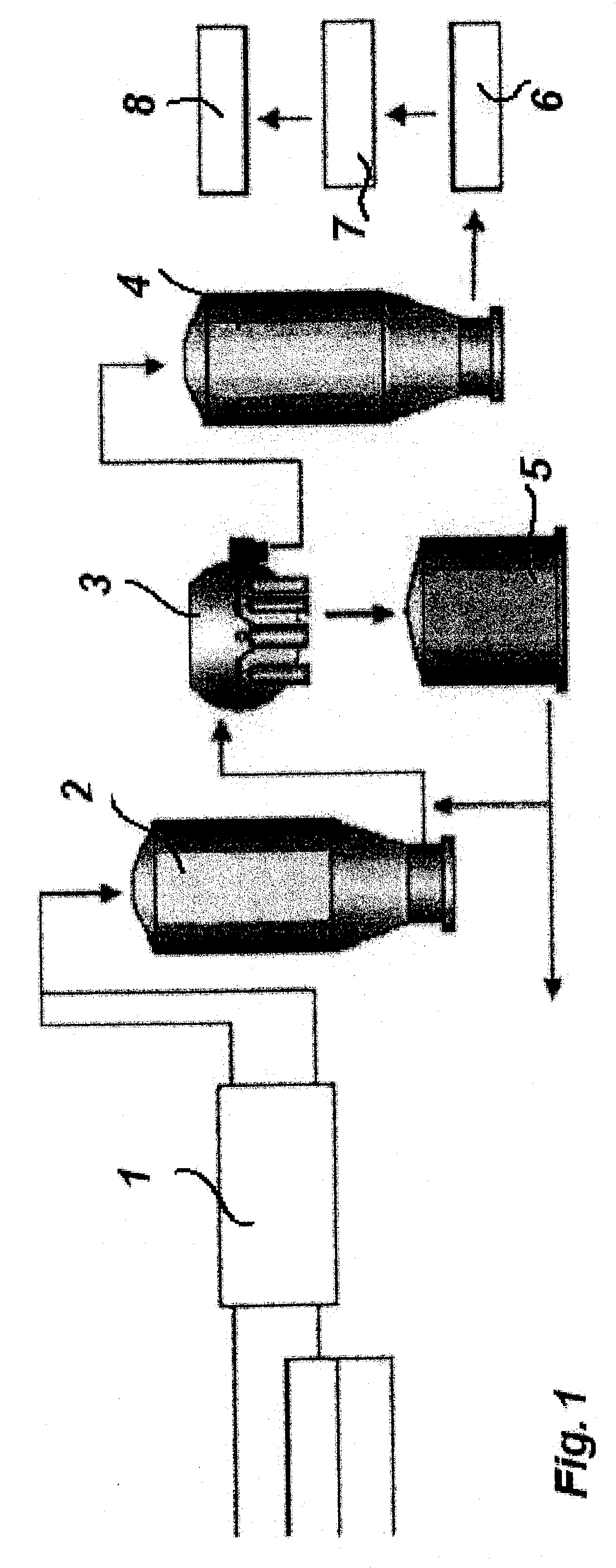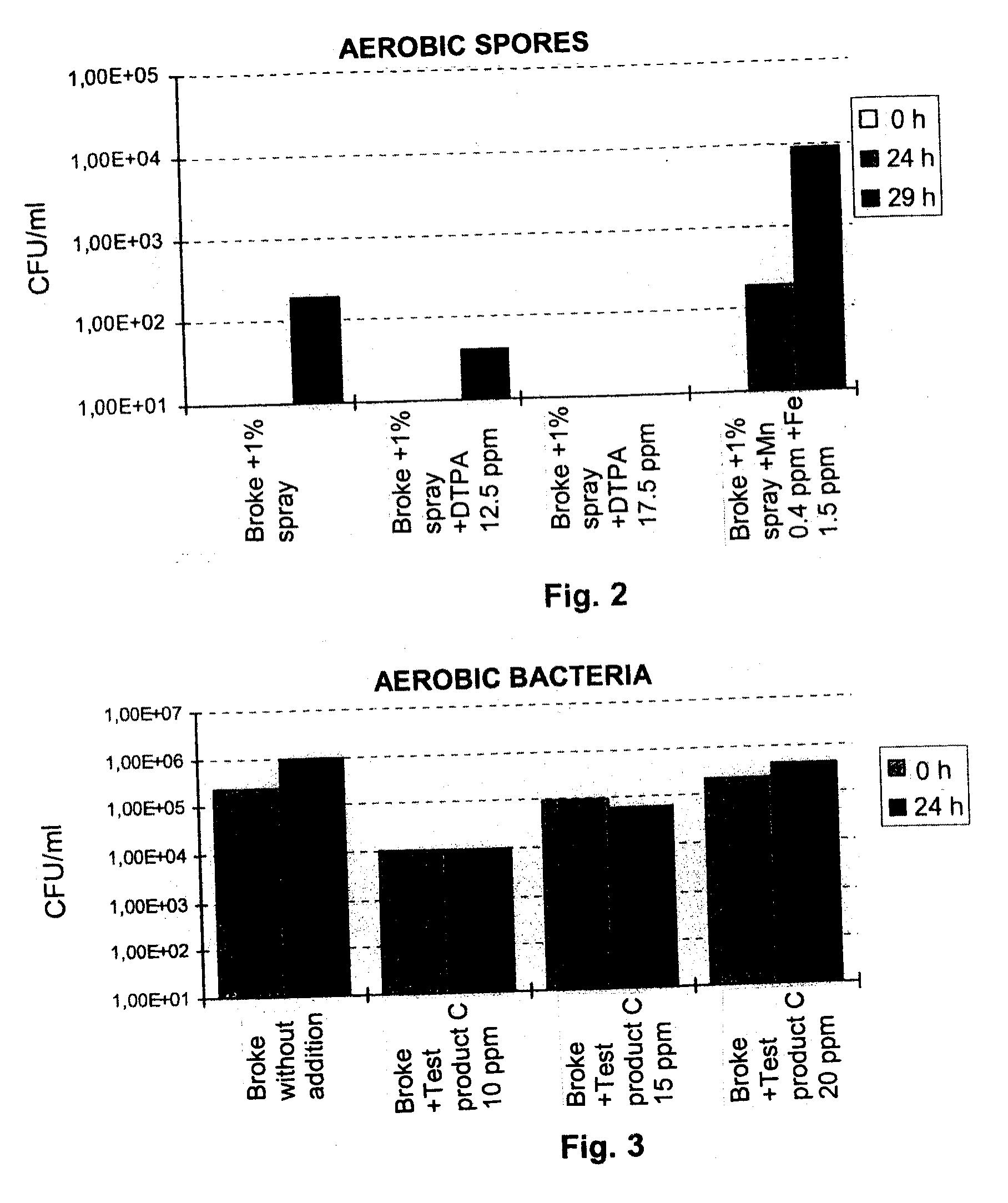Prevention of bacterial spore formation in a broke system of a board machine
a technology of a broken system and a board machine, which is applied in the directions of non-fibrous pulp addition, slime-control agent addition, biocidal agent addition, etc., can solve the problems of only sporulation of cells under environmental stress, low spore content of the final product, and inability to use biocides in the amount necessary for the eradication of mature spores
- Summary
- Abstract
- Description
- Claims
- Application Information
AI Technical Summary
Benefits of technology
Problems solved by technology
Method used
Image
Examples
example 1
[0101]In this laboratory experiment, the effect of bivalent manganese and bivalent iron as well as a chelating agent (DTPA, diethylenetriaminepentaacetic acid) on the sporulation of bacilli isolated from a board machine was studied under conditions of the broke system. For the experiment, an inoculum free of spores was prepared from the Bacillus licheniformis 217 strain by carrying out three consecutive cultivations in a liquid medium for 24 hours (Tryptone-Yeast Extract Medium, +50° C., agitation at 100 rpm) using a low inoculation ratio (0.1% by volume / volume). Broke free of spores was produced by sterilizing dilute broke of the board machine. A low amount of spray starch used in the board machine was added to the broke to make up for the amount of starch consumed by bacterial activity during the transportation of the broke sample to the laboratory. The broke was divided into aliquots of 25 ml each and filled in tubes, followed by the addition of the test agents at different conce...
example 2
[0103]In this laboratory experiment, the effect of a test product C containing a dispersing agent and DTPA on sporulation of bacilli isolated from a board machine was studied under the conditions in the broke system. The composition of the test product C was as follows: 40% (weight / volume) of pentasodium salt of the diethylenetriaminepentaacetic acid (DTPA), 2% (weight / volume) of sodium gluconate, and 2% (weight / volume) of naphthalenesulfonate (condensation polymer of naphthalenesulfonic acid and formaldehyde). The study was carried out as the study in example 1 except for the fact that the inoculum was cultivated at +45° C., without the addition of spray starch to the broke.
[0104]The test results are presented in FIGS. 3 and 4. In this experiment, 32,000 spores / ml were formed in the control sample (broke without any additives), sporulation frequency being thus 3.2%. This suggests that the conditions in this broke were more favorable for the sporulation of bacilli than in the broke ...
example 3
[0105]In this laboratory experiment, the effect of bivalent manganese and bivalent iron, DTPA, and test product C containing a dispersing agent and DTPA on sporulation of bacilli in the broke of a board machine isolated therefrom was studied. The study was performed as in example 2.
[0106]The test results are shown in FIGS. 5 and 6. In this experiment, the spore amount after 24 hours was 25,000 spores / ml for the control sample (broke without any addition), sporulation frequency being 2.3%. This suggests that the conditions in the broke were rather favorable for sporulation of bacilli without further additions. The addition of bivalent transition metals to the broke resulted in doubling of the number of spores generated, sporulation frequency being 4.2%. FIG. 5 shows that neither DTPA nor the test product C was toxic to bacilli. FIG. 6 shows that 12 ppm of DTPA (as active agent) lowered both sporulation by 99.4% and sporulation frequency (to 0.11%). The test product C was still more e...
PUM
| Property | Measurement | Unit |
|---|---|---|
| weight/volume | aaaaa | aaaaa |
| volume | aaaaa | aaaaa |
| weight ratio | aaaaa | aaaaa |
Abstract
Description
Claims
Application Information
 Login to View More
Login to View More - R&D
- Intellectual Property
- Life Sciences
- Materials
- Tech Scout
- Unparalleled Data Quality
- Higher Quality Content
- 60% Fewer Hallucinations
Browse by: Latest US Patents, China's latest patents, Technical Efficacy Thesaurus, Application Domain, Technology Topic, Popular Technical Reports.
© 2025 PatSnap. All rights reserved.Legal|Privacy policy|Modern Slavery Act Transparency Statement|Sitemap|About US| Contact US: help@patsnap.com



